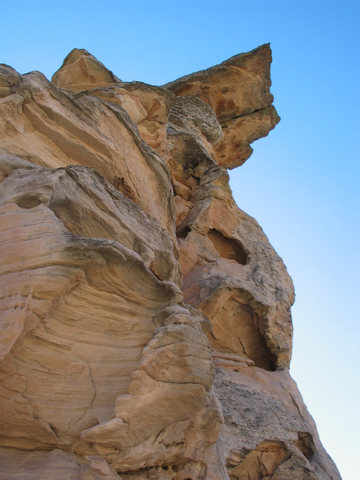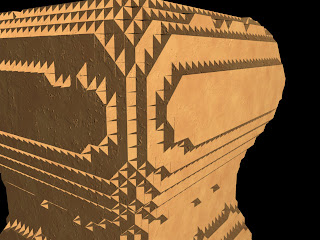 On Friday November 2, a few of us went down to Little Holes Canyon near the San Rafael River to check out the Conquistadores as a field work test site for our upcoming modeling project. After a little "navigational ambiguity" on the rim of the canyon, we found our way over to the Conquistadores and determined that this is a near perfect test site for us.
On Friday November 2, a few of us went down to Little Holes Canyon near the San Rafael River to check out the Conquistadores as a field work test site for our upcoming modeling project. After a little "navigational ambiguity" on the rim of the canyon, we found our way over to the Conquistadores and determined that this is a near perfect test site for us.We want some rocks which are visually complex, easy to get to but require traveling on foot and afford 360 degree access. We got all of that plus 360 degree access from above (on the canyon rim) and below (on the canyon floor).
 The geometry is a little intimidating, but that's what makes it research. We thought it would be important to photograph some of the funkier shapes so that potential reviewers would know that the shapes were real and not an artifact of the modeling process.
The geometry is a little intimidating, but that's what makes it research. We thought it would be important to photograph some of the funkier shapes so that potential reviewers would know that the shapes were real and not an artifact of the modeling process.













